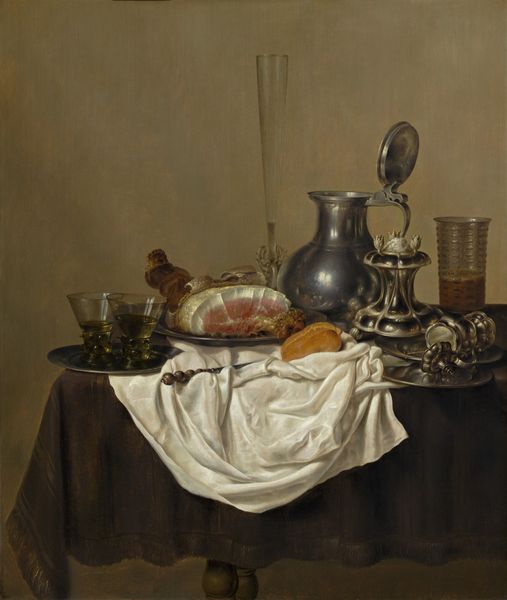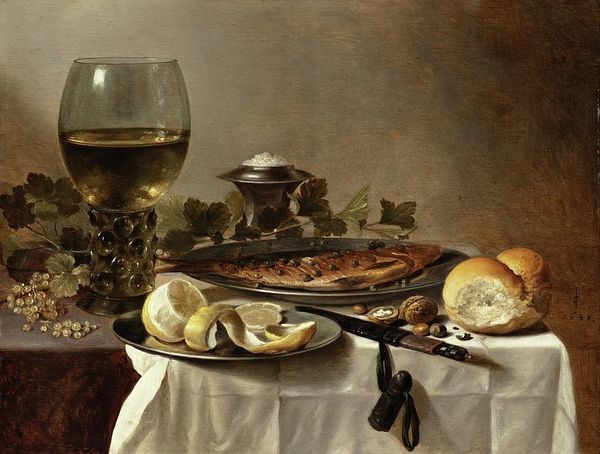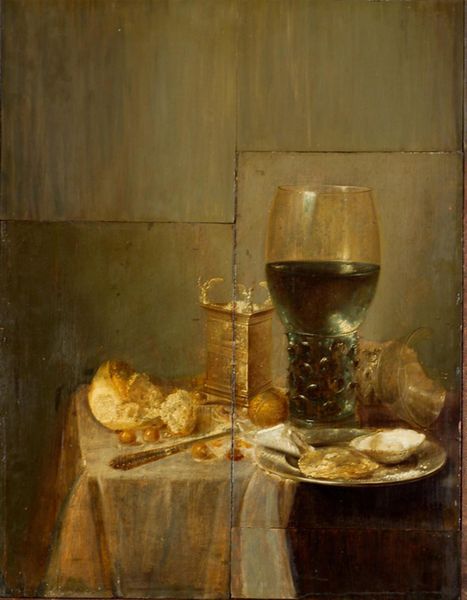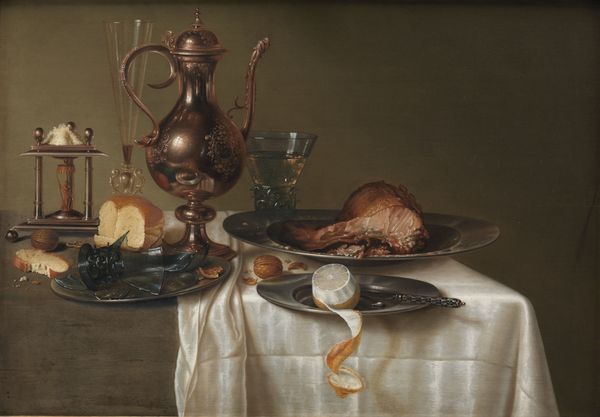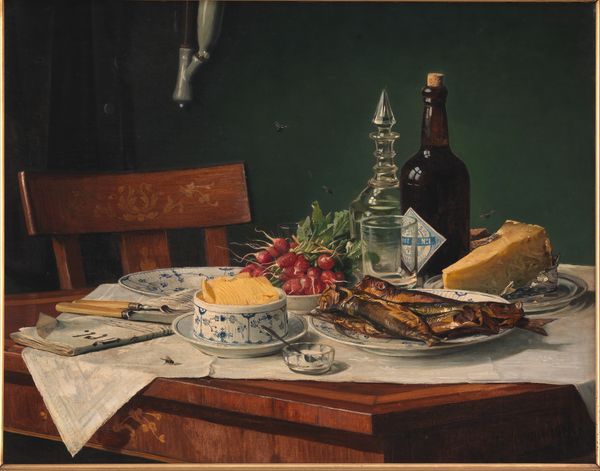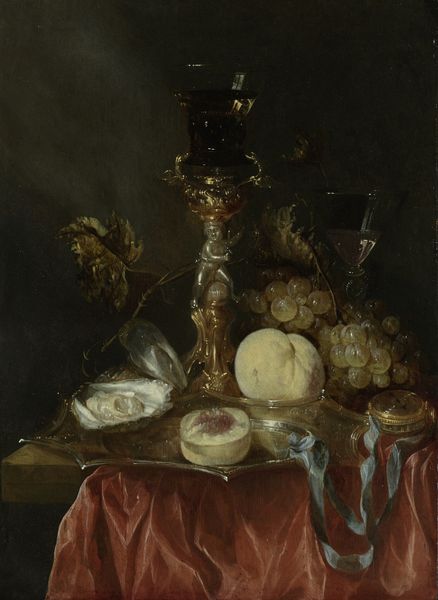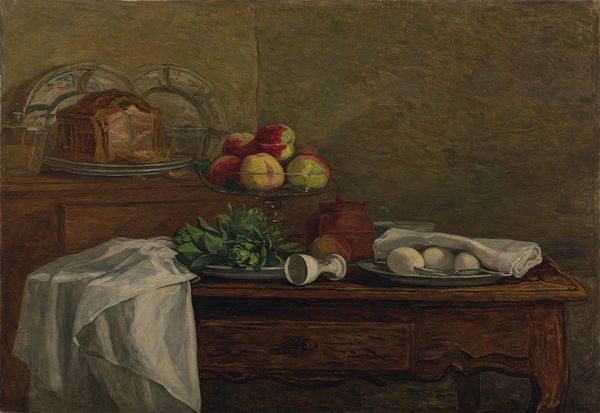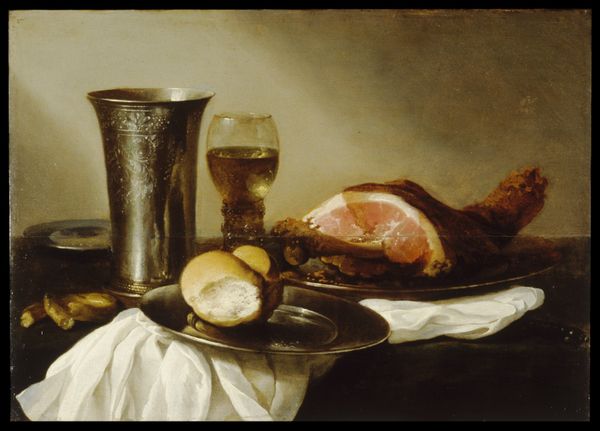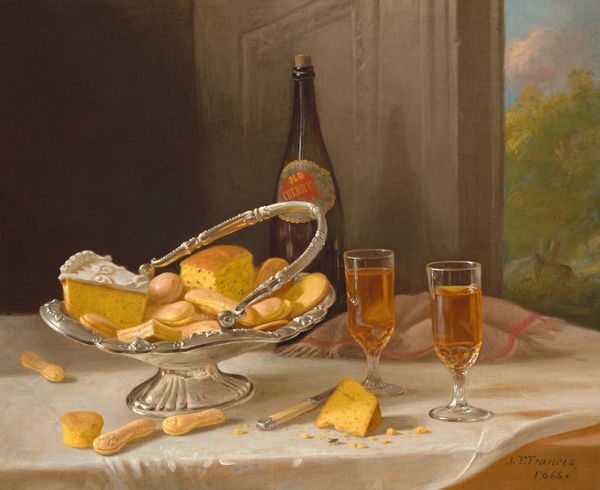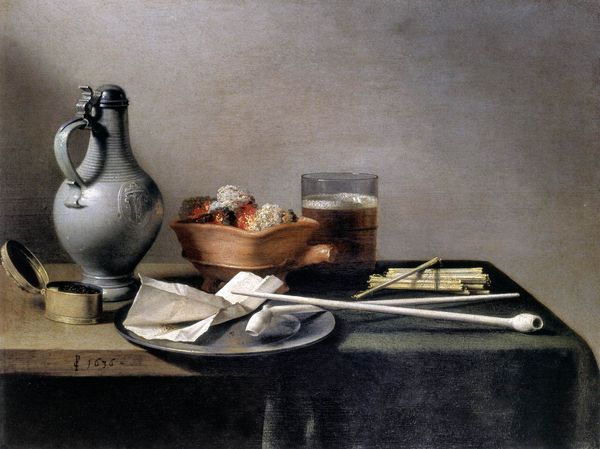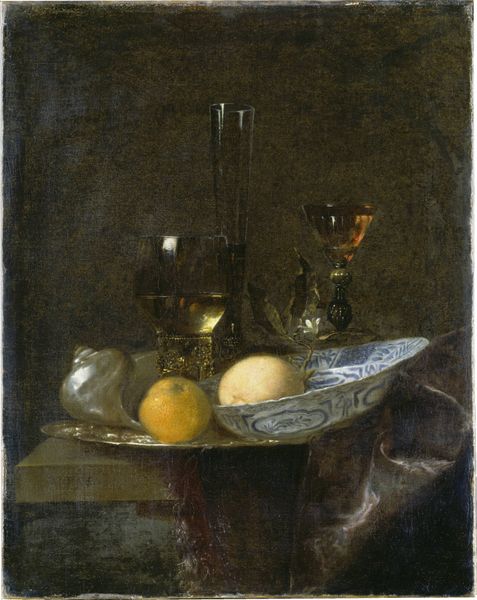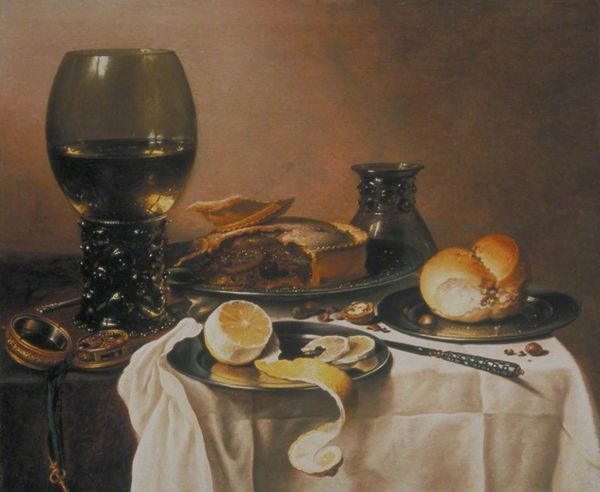
painting, oil-paint, oil-on-canvas
#
baroque
#
painting
#
oil-paint
#
oil painting
#
france
#
painting painterly
#
oil-on-canvas
#
rococo
Dimensions: 96.8 × 123.5 cm (38 1/8 × 48 5/16 in.)
Copyright: Public Domain
Curator: Here we have "The White Tablecloth," a still life painting by Jean-Baptiste-Siméon Chardin, created around 1731-1732. It's a superb example of French Rococo, rendered in oil on canvas. What's your first take? Editor: Immediately, it strikes me as a study in contrasts. The rough, dark barrel sits against the pristine, luminous white tablecloth. The artist truly understood texture. Curator: Yes, the textures certainly are significant. In many cultures, white cloths signify purity or special occasions, and, depending on social and religious context, sharing a table builds fellowship, but I sense there's a quiet solemnity here. Editor: I agree, the light has much to do with that. Chardin's choice to subdue the overall color palette creates a specific, very focused visual rhythm. The wine is the only striking chromatic element, and even it feels muted. It draws the eye and holds it there. Curator: Wine in this context, given that Chardin was painting during the rise of the bourgeois in France, would have represented both wealth and leisure. It speaks to new class dynamics emerging then. The inclusion of bread also has religious and spiritual reverberations across centuries of symbolic representation. Editor: That is an important point to make. Still life is far from "still"— the objects he arranges seem charged with hidden cultural narratives, yet Chardin arranges them with superb formal constraint. Notice how the table's diagonal shadow leads your eye directly to the focal point of the composition – that half-eaten loaf and gleaming silverware. Curator: Indeed. Consider the slightly opened box next to the table and how its dark interior speaks to the hidden aspects of our daily life. Or the overturned glass suggesting the fleeting nature of worldly pleasures. All in conversation, it’s such a nuanced and personal reflection. Editor: It definitely invites introspection. Ultimately, Chardin is brilliant at reminding us that meaning resides as much in the observer as it does in the observed. His artistry lies in revealing inherent symbolic codes without feeling overtly didactic. Curator: Precisely. Chardin uses humble objects to speak volumes about societal values and hidden yearnings—connecting cultural memory with everyday experience. Editor: I find myself simply appreciating his mastery of light and form. The stark contrast of textures, the way he directs your gaze with light and shadow – it's beautiful, regardless of symbolic reading. Curator: And that’s the real charm of Chardin’s work – layers upon layers of meaning waiting to be peeled back, each interpretation enhancing our understanding of art and history. Editor: I will definitely walk away with new appreciation for how "still life" manages to speak volumes!
Comments
No comments
Be the first to comment and join the conversation on the ultimate creative platform.
